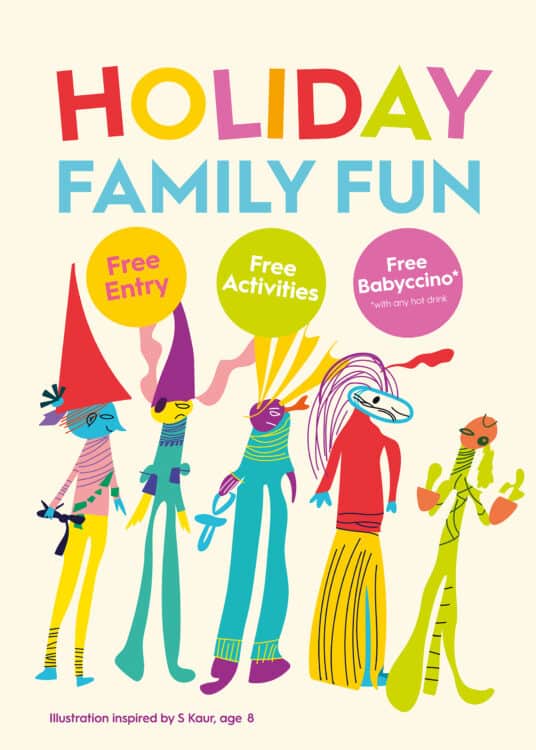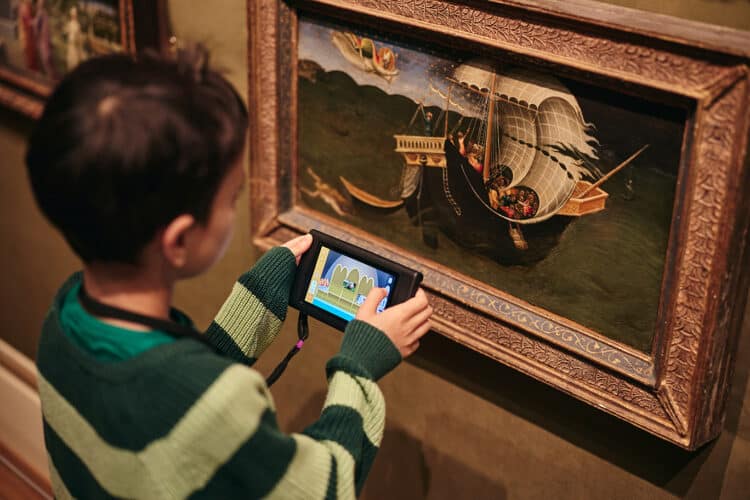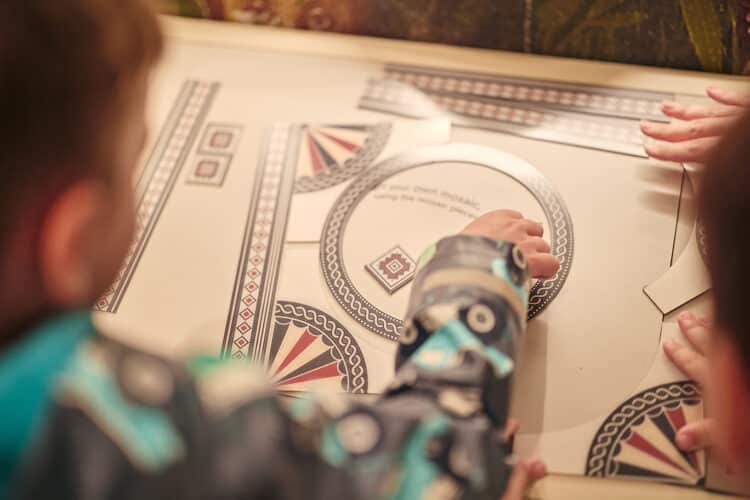Inspiring Families at the Ashmolean: What Makes a Museum Visit Work for Children
21 Oct 2025|Gina Koutsika
- Research

According to our research, families make decisions quickly, based on whether an outing looks fun, rewarding and manageable. They want days out that create memories, with children at the centre. For them, a museum is less about dutifully learning and more about shared discovery: somewhere children can be curious, active and inspired.
Unsurprisingly, several barriers emerged. Many parents felt the Ashmolean seemed more suitable for adults or adolescents. Our galleries and lifts could be hard to navigate with a buggy, and the building’s grandeur, especially the echoing entrance hall, sometimes felt overwhelming to younger or neurodivergent children. Parents were often caught between their own enthusiasm for the collections and the difficulty of engaging younger children. As one put it, “I’d be scared to death of them grabbing something; I’d be watching them like an eagle the whole time.” At the same time, children themselves expressed the wish to “do” things rather than simply look.
Despite these challenges, families were clear that the Ashmolean has immense appeal. They described it as “an oasis of calm in a busy city” and a place of beauty, where collections can fire imaginations across generations. Parents wanted to share their passions, be it Antiquities sculpture or Renaissance drawings, with their children, when the conditions were right to do so. When families were asked what messages resonated most with them, the Ashmolean’s aspiration of Inspiring Minds stood out. More than simply welcoming people, families wanted to know their children would leave buzzing with curiosity, eager to learn more.

The research distilled families’ needs into a few key themes:
Clarity and ease: Parents want to know at a glance whether the museum is buggy-friendly, where to rest, and what their children will actually be able to do. Surprises are welcome in the galleries but not when it comes to whether activities run as advertised.
Visual cues: Families respond to vibrant colours, bold fonts and clear imagery that shows children like them actively exploring. Marketing materials that feel sombre or overly formal are a turn-off.
Active experiences: More than anything, they want hands-on opportunities. Whether handling replica objects, trying out a trail or joining a creative workshop, families are drawn to activities where children can be independent, playful and engaged.
Tone of voice: Parents and children alike prefer warm, direct communication that sparks imagination. Instead of “Welcoming everyone since 1683,” families respond better to invitations such as “Play lives here” or “Can you spot the hidden animal?”.
Shared moments: Photography and storytelling should show families enjoying experiences together. Adults want to feel proud of their children’s curiosity, while children want to see that their own heritage and interests are represented in the museum.
So, what might a truly family-friendly Ashmolean look like?

First, it would make navigation simple and stress-free. Clear family maps, routes and signposting would help parents feel in control. Second, it would offer reliable, visible hands-on experiences across all floors, not just tucked away on the lower ground and ground levels. Third, the museum would project itself visually as a place for families: bright colours, lively illustrations and photography that shows real families taking part. Importantly, any images or promises would always match the experience on the day. Finally, it would continue to embody the spirit of Inspiring Minds. Families don’t just want entertainment; they want children to leave with sparks of knowledge, the thrill of discovery, and stories to share on the way home.
This summer, we began to put these lessons into practice with a vibrant programme of family activities. From our Festival of Archaeology, in July, with creative art workshops to hands-on trails inspired by our collections, families were invited to explore together, play, and make memories in the museum. The feedback was clear: when children are given the chance to take the lead, parents relax, and everyone leaves with a sense of discovery.
Looking ahead, our October half-term activities will build on this momentum. Families can expect interactive sessions, themed storytelling, and opportunities to get hands-on with history in new and imaginative ways. These programmes are designed not only to keep children entertained during the school holidays, but also to spark their curiosity about the world around them and about the stories told through the Ashmolean’s collections.

For local parents, a trusted, welcoming museum is somewhere to return to again and again, and somewhere to recommend to friends. For children, an inspiring early encounter may plant the seed of a lifelong passion. The Ashmolean already has the collections, the beauty and the gravitas. With thoughtful design, reliable programming and communications that place children at the heart, it can also become the go-to place for Oxford families looking to combine fun with meaning.
In the words of one parent: “That’s what you really want from a museum, especially if you are going with children. You want them to be inspired to go and research some more, to be excited about learning about different historical times.”
This blog is based on audience research contacted by Sphere Insights (2023, 2024) and by Flow Associates (2025) in close collaboration with Gina Koutsika, Suzanne de la Rosa, Sarah Casey and Ania Bas.
Category: Research
Author

Gina
Koutsika
Gina is Fellow by Special Election and Director of Audiences and Content at the Ashmolean Museum of Art and Archaeology.